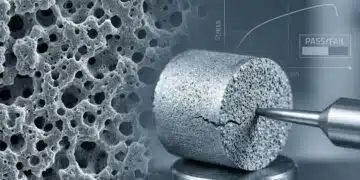Murata Manufacturing Co., Ltd. has developed the ECASD40E477M4R5KA0 polymer aluminum electrolytic smoothing capacitor that achieves low ESR (4.5 mΩ) while maintaining a thin design (2.0 mm Max) and large capacitance (470 μF) in a D case (7.3 x 4.3 mm), equivalent to conventional products.
Mass production has already begun, and samples can also be provided.
In recent years, IT devices such as servers and accelerators used in data centers are being created to support larger currents.
Since IC voltage fluctuation and heat generation are major issues that must be tackled to achieve stable device operation, it is necessary to both increase the capacitance of the capacitors used to suppress voltage fluctuations and to mount large, high-performance heat sinks (cooling units) on the ICs.
Murata has proposed component costs reduction through problem solving using conventional low-profile and high-capacitance products as well as by reducing the number of components used.
However, there is a growing demand for lower ESR products as a response to noise amplification due to the application of larger ripple currents. Murata has now developed this product with a ESR value improved by 25% while maintaining the height and high-capacitance of conventional products. With this product, Murata contributes to providing stable device power supply while suppressing mounting areas and costs of electronic components.
| Product name | ECASD40E477M4R5KA0 |
|---|---|
| Size (L x W x T) | 7.3×4.3×1.9mm (T2.0mmMax) |
| Rated voltage | 2.5Vdc |
| Capacitance | 470μF±20% |
| ESR | 4.5mΩ |































